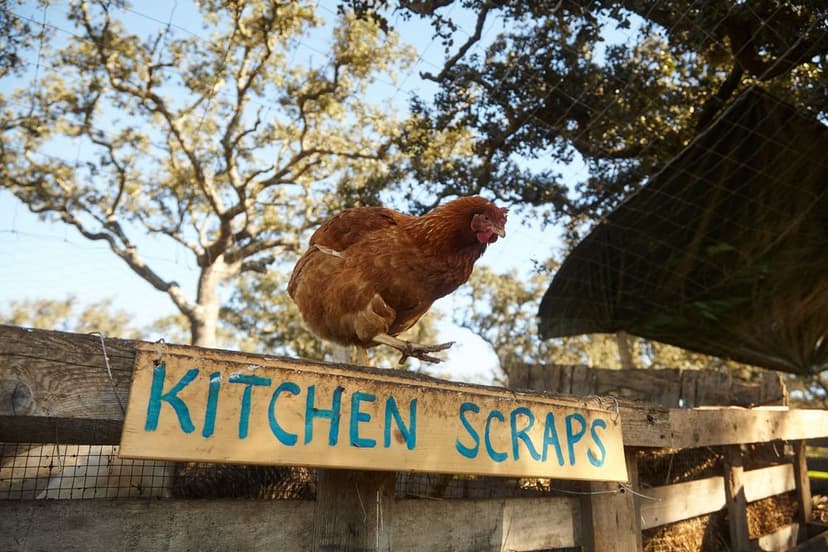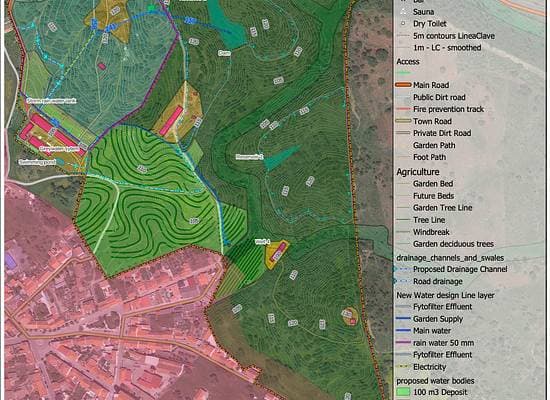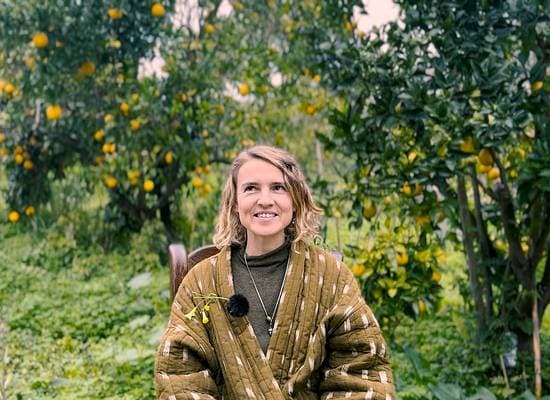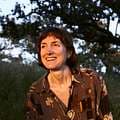Land
Permaculture Garden 101: Revolution Disguised as Gardening

Head over to our Learning Hub to become a Wanderer and unlock access to the full video class, along with many others.
Permaculture Garden: A revolution Disguised as Gardening
A permaculture garden is much more than just a vegetable garden, and has advantages that traditional gardens many times lack. If there’s one thing people take pride in, it’s an obsession with efficiency, reinvention, and finding beauty in chaos. So when Mika and Ofer—TDF’s resident land caregivers (because "manager" doesn’t quite cut it)—start talking about a permaculture garden, it feels like they’re sharing trade secrets for a better universe, wrapped in the poetic veneer of rural wisdom.
Imagine this: a design system so profound it reshapes your entire worldview. That’s the view permaculture brings to a permaculture garden. Mika and Ofer casually describe it as a kind of “revolution disguised as gardening.” Bold, right? But spend five minutes listening to them, and you’ll see why this unassuming philosophy is more than just dirt and seeds.
Designing the Ecosystem of Forever with a Permaculture Garden
A permaculture garden is not about hacking nature. It’s about courting it. It’s about imitating nature’s innate genius to create systems that work like poetry in motion. The goal? A space that’s abundant, diverse, and resilient enough to last a few centuries—no biggie.
Take their chicken coop-slash-veggie-garden-slash-compost-dream-team, for example. Chickens snack on kitchen scraps, create compost that feeds the permaculture garden, and in turn, the garden nourishes humans. The cycle? A self-sustaining, closed-loop ecosystem of bliss. Chickens aren’t just “egg machines” here; they’re VIPs of a thriving ecological party.
But it’s not just chickens and kale. Their philosophy extends to every layer of their land. Piles of mulch become breeding grounds for soil microbiomes. Fruit trees aren’t lonely rows of monocrops but diverse food forests with timber trees, shrubs, and native species. “We’re not growing plants,” Mika says with a knowing smirk, “we’re growing soil.”

Slowing Down to the Speed of Trees
Permaculture’s pace is as seductive as its principles. In a world sprinting toward faster, shinier, and now-er, the permaculture garden whispers, slow down. Nature doesn’t rush, and neither should you.
“You want to lay in a hammock for a year before you start planning,” they explain, half-joking but entirely serious. Observe the seasons. Watch the rain dance across the land. Understand the patterns before you dare to intervene. After all, the idea is to plan for hundreds of years—not just the next harvest.
A Permaculture Garden as a Mix of Beauty, Community, and the Art of Enough
A permaculture garden isn’t just about plants and soil. It’s about the people, the stories, and yes, even the weird, wonderful costume closet they keep for parties. “Community is central,” Ofer insists. Whether it’s neighbors swapping surplus fruit or dressing up in sequins for no reason other than joy, the ethos of fair share permeates everything.
This isn’t a lifestyle that hoards abundance—it radiates it. It’s as much about rewilding land as it is about rewilding your soul, leaving room for the non-human world to thrive alongside us. Fair share, they remind us, isn’t just a hand-me-down hippie mantra. It’s a call to care for future generations, the creatures that share this earth, and even the soil itself.
In a Permaculture Garden, the Secret is in the Web
At its heart, a permaculture garden is about connection. Every system feeds another, every function is stacked. A tree isn’t just a tree; it’s shade, food, habitat, and a life-long teacher of patience. “We’re weaving this intricate web,” Mika says, “where everything is part of everything else.”
It’s the kind of holistic thinking that feels at odds with city living—until you realize it’s not. The same principles can apply to a rooftop garden, a tiny backyard, or even your relationships. Permaculture isn’t limited to fields and forests; it’s a mindset, a revolution of enough-ness, a quiet antidote to the frenzy of modern life.
So yes, it’s gardening. But it’s also art, philosophy, science, and the faint hum of a better future.
And isn’t that the kind of revolution worth starting?
Watch and Learn About Permaculture and Permaculture Gardens
Watch our brand-new Permaculture 101 video on the Learning Hub and discover how you can start making a positive impact in your own space. Start learning today and join the movement towards a more sustainable future! Also see how TDF applies the 12 Permaculture Principles both in the permaculture garden and in the land, in the video below.
Extra Inspiration for Your Permaculture Garden
Need a nudge to get started? Visit us and discover a permaculture garden model that blends productivity with beauty and biodiversity.
Draw inspiration and let your permaculture garden reflect your values and vision. Whether you're planting herbs on a windowsill or building a full-scale food forest, your actions matter. Small-scale care can transform landscapes, communities, and lives.
What to read next

Pollination and Beekeeping
Honeybee populations around the world are in decline, due in part to global warming. Bees are some of the most effective pollinators we have. Not only does this...

Why we are building water retention landscapes to sustain a productive agroforestry systems in Alentejo
The Alentejo region where TDF is located is experiencing a water crisis that threatens both its natural ecosystems and agricultural productivity. Climate change...

Evgenia Emets: Art, Regenerative Agriculture, and the Rise of Forest Sanctuaries
Head over to our Learning Hub to become a Wanderer and unlock access to the full video class, along with many others.Evgenia Emets doesn’t just discuss regenera...

